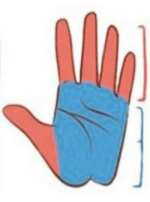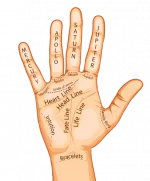Introduction
Our palms hold fascinating insights into our lives, much like a book with its unique chapters and stories waiting to be unraveled. One of the most captivating features of the palm is the enigmatic “lifeline” – a crease that has captivated human curiosity for centuries. Often associated with fate, destiny, and longevity, the lifeline is believed to reveal glimpses of our journey on this earthly plane. In this blog post, we’ll dive into the intriguing world of the lifeline and explore its significance in palmistry.
Understanding Palmistry
Palmistry, or chiromancy, is an ancient art that traces its origins back to civilizations like the Greeks, Egyptians, and Chinese. It’s the practice of interpreting the lines, shapes, and mounts on the palm to gain insights into an individual’s personality, strengths, weaknesses, and even potential life events. While modern science doesn’t validate the claims of palmistry, many people find fascination and enjoyment in exploring these ancient traditions.
The Lifeline: Beyond the Physical
The lifeline, often the most prominent crease on the palm, runs around the base of the thumb and encircles the ball of the thumb before curving towards the wrist. Contrary to popular belief, the lifeline is not a definitive predictor of an individual’s lifespan. Instead, it provides a snapshot of the person’s physical and emotional vitality, major life changes, and even their approach to challenges.
- Length and Depth: A longer and deeper lifeline is often interpreted as an indicator of a strong constitution and vitality. However, variations in length can simply be due to genetics, and other factors such as lifestyle and environmental influences play a significant role in determining one’s health.
- Curves and Breaks: The lifeline’s curves and breaks might symbolize important life events or changes. A sudden change in direction might denote a significant shift in one’s life path, such as a career change or a personal transformation.
- Chains and Islands: Chains and islands that appear on the lifeline can signify periods of uncertainty, challenge, or potential health issues. These might correspond to moments of stress or emotional upheaval.
- Forks and Branches: Forks or branches that extend from the lifeline might suggest different paths or opportunities in life. These can represent choices, challenges, or even potential career shifts.
- Intersection with Other Lines: The interaction between the lifeline and other lines on the palm, such as the heart line and head line, can provide a more holistic understanding of an individual’s character and experiences.
Empowerment Through Exploration
While palmistry is often seen as a form of entertainment or curiosity, it can also be a tool for self-reflection and personal growth. By exploring the lifeline and other features of the palm, individuals can gain insights into their strengths and areas for improvement. Rather than relying on palmistry as a prediction tool, it can serve as a prompt for deeper introspection and a means to enhance self-awareness.
Conclusion
The lifeline on your palm is not just a simple crease; it’s a fascinating symbol of the intricate tapestry that is your life. Whether you’re a skeptic or a curious enthusiast, exploring palmistry can be an engaging journey into self-discovery. Remember, the lifeline is not an unalterable script of your life; it’s a dynamic representation of your experiences and choices. So, the next time you gaze at your palm, take a moment to appreciate the stories etched in those lines – the stories of your unique and remarkable journey.

